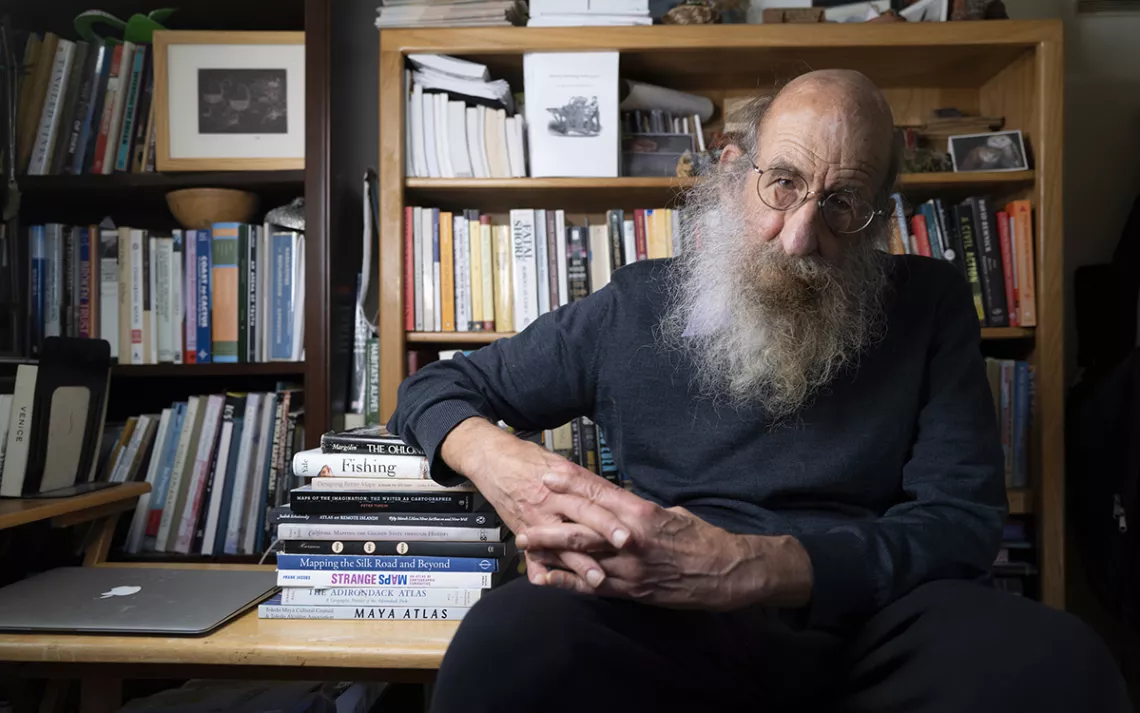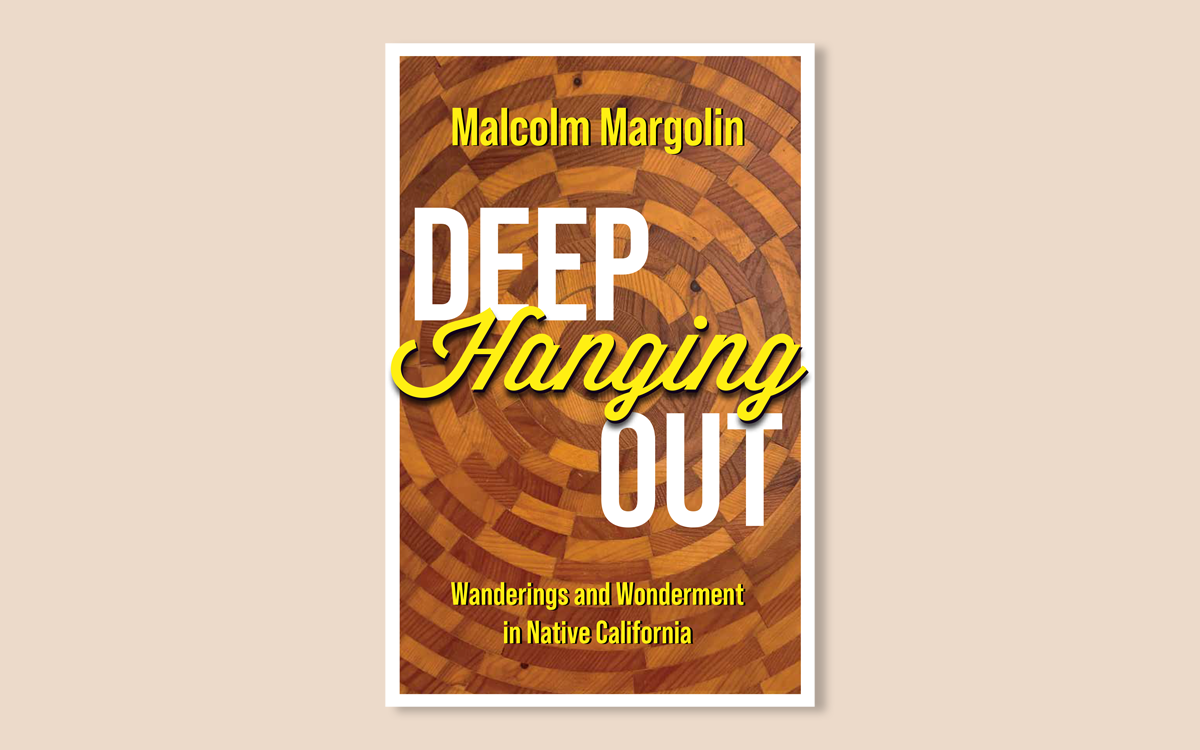Native People’s Stories As They Should Be Told
Malcolm Margolin’s "Deep Hanging Out" is the result of a lifetime of friendship and respect for California’s Indigenous people

Photo by Christopher Michel
When I began my study of California’s Indigenous peoples in the 1990s, Malcolm Margolin’s The Ohlone Way: Indian Life in the San Francisco–Monterey Bay Area (1978) was one of only a handful of books that connected the long California Native past to the present. He avoided the hubris of describing the imagined life of Native people to non-Natives', an enterprise that has often gone tragically wrong. Instead of viewing Native people as subjects of study, Margolin engaged with them, became friends, listened, and respected the stories they told him.
Now, after Margolin's long and singular career, Heyday Books, the publishing house he founded, has issued Deep Hanging Out: Wanderings and Wonderment in Native California (2021), a collection of 29 excerpts, interviews, conversations, and essays written between 1974 and 2019 that illustrate the rich insight provided by his long friendships with Native people across the state—Ohlone, Miwok, Pomo, Maidu, Yokuts, Yuki, Hupa, Karuk, Yurok, Kumeyaay, Cahuilla, and Quechan, among many others. People offering advance praise for this book include numerous tribal chairpeople, activists, educators, authors, a former governor, and a US poet laureate. I am honored to add my praise to the chorus for this wonderful book. Curiously, in the original, standalone pieces, Margolin could deflect attention away from himself to Native people and what he learned from them. But collected here, the attention lingers on him a bit, making him a more prominent figure in a story seen through his eyes and informed by his passions.
Who is Malcolm Margolin, and how did he become a fixture in the California Native community? Born and raised in the Dorchester neighborhood in Boston, Margolin received a degree in English literature from Harvard and headed west in a Volkswagen bus in the late 1960s. He landed in Berkeley and stayed. He worked for the East Bay Regional Park District, and out of those experiences published two books (The Earth Manual: How to Work on Wild Land Without Taming It in 1972 and The East Bay Out: A Personal Guide to the East Bay Regional Parks in 1974) and founded Heyday Books.
He turned his attention to Native Americans, who, he writes, “were seemingly everywhere, yet I began to wonder about the Indians who were originally from Northern California.” He immersed himself in the thriving but not always visible Bay Area Native community and listened carefully. The result was The Ohlone Way, based on his capacious readings in primary and secondary sources and archival materials and rendered in deceptively simple and elegant prose. Out of the friendships he made at the time came News From Native California, which he cofounded with anthropologists Vera Mae Fredrickson and David Peri (Coast Miwok) in 1987. Since then, the magazine has come to be a major cultural institution and the original publisher for many of the pieces excerpted or reprinted here.
Too often, non-Natives studying Native people for what they can teach non-Native society have contributed to the tired tropes of noble, ancient, wise, but disappearing Indians. I see it in my students, in the dream catchers in their dorm rooms and their belief in an innately passive sense of Native ecology. Margolin’s Berkeley of the late 1960s and early 1970s was awash in this trend. Many counter-cultural activists seized on Native culture as an extractive model for an alternative way to live. They turned Native people into something useful to them. Margolin deftly avoids that pattern. His wonder drives him, but the informal conversations and casual moments of laughter or friendship with Native people across the state that pepper his essays make him a participant as much as a collector of stories. His careful observations focus on what Native people said and did, and he offers these observations without displacing the people who shared them.

A number of pieces in this book may be of particular interest to readers of Sierra. The essay “Wealth and Spirit” is a reflection on the obligations traditional Native regalia places on the people who make and care for them and the nonfungible form of spiritual and material wealth that creates. It starts, as so many of these essays do, with a conversation among friends, this one with a number of Tolowa, Yuki, Karuk, Hupa, and Wailaki regalia makers that took place at the University of California’s Hearst Museum. The difficulty and time commitment necessary to make regalia—it might take 20 years, for example, to collect the shells used on a dress or the 168 pileated woodpecker crests used to make a single feathered headdress—link spiritual, ecological, and material interests. Another piece called “Traditional California Indian Conservation” illustrates ways that Native religious practices impeded individual and acquisitive uses of natural resources, building a communal sense of shared ecological responsibility.
In Margolin’s hands, the connections are as much practical and logical as they are religious and mystical. There is a short piece on Ohlone tule houses drawn from a presentation to fourth graders that ultimately becomes a conversation about class and the importance of cross-cultural “recognition of the value of other peoples’ choices.” His essay on efforts by the Southern Sierra Miwuk Nation to rebuild the roundhouse at the Wahhoga Village in Yosemite highlights the tension between the idea of national parks as sanctuaries and Native demands to use land stolen from them as part of their own assertion of sovereignty. Margolin points to the Park Service’s efforts to restore an Indigenous presence in the park, like hiring Natives as cultural interpreters and demonstrators, as being “commendable [but] a contradiction: While Indian culture can be demonstrated in the Valley, it cannot be lived there.”
For readers unfamiliar with Margolin’s other work, Deep Hanging Out will be an excellent introduction to a vibrant, dynamic, and growing field of scholarship and activism. For those more familiar with the author, the book serves as a handy compendium of his long career. Two images from the book have stuck with me. Margolin ends an essay with a description of the Wintu use of “northward” or “southward” (rather than right or left) in reference to one’s arms to illustrate the concept of “a self that continually accommodated and adjusted to a world in which the individual was not the center of all creation.” In another essay, he recounts a conversation with Serrano/Cahuilla birdsong singer Ernest Siva, in which Siva explained that “what gave the song its meaning was not just the words but who had taught it to him, when it could be sung, who could sing it, all the other times it had been sung, to whom he had taught or would be teaching it.” That prompts Margolin to recall a grammar school teacher whom he had a crush on, who read Heidi to his class. Margolin attributes his love for the Swiss Alps to that emotional connection. As he puts it, “Native pedagogy concerns itself not just with what is taught but with who teaches it and under what circumstances.”
At first blush, the anecdote seems a cheap comparison, until one realizes that it is exactly apt—simple and deep as a childhood crush and a story, or a song and a funeral, or a conversation with a stranger in the shade of an oak tree. How these essays came to be is inseparable from the content itself, and as much as Margolin appears in them, he is never the center of attention.
 The Magazine of The Sierra Club
The Magazine of The Sierra Club



